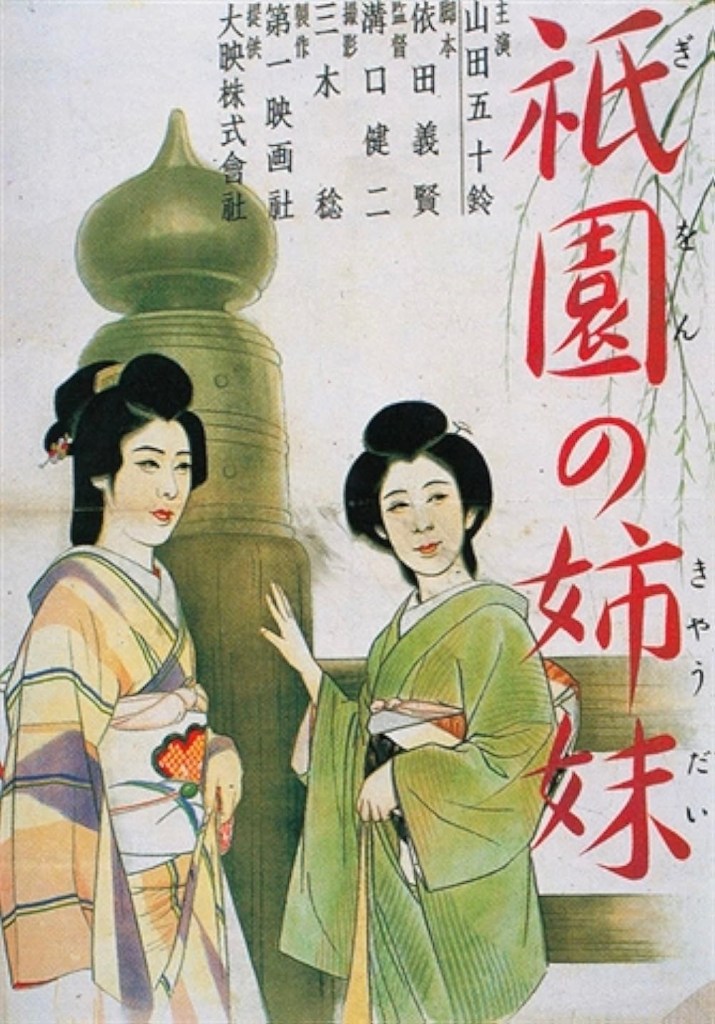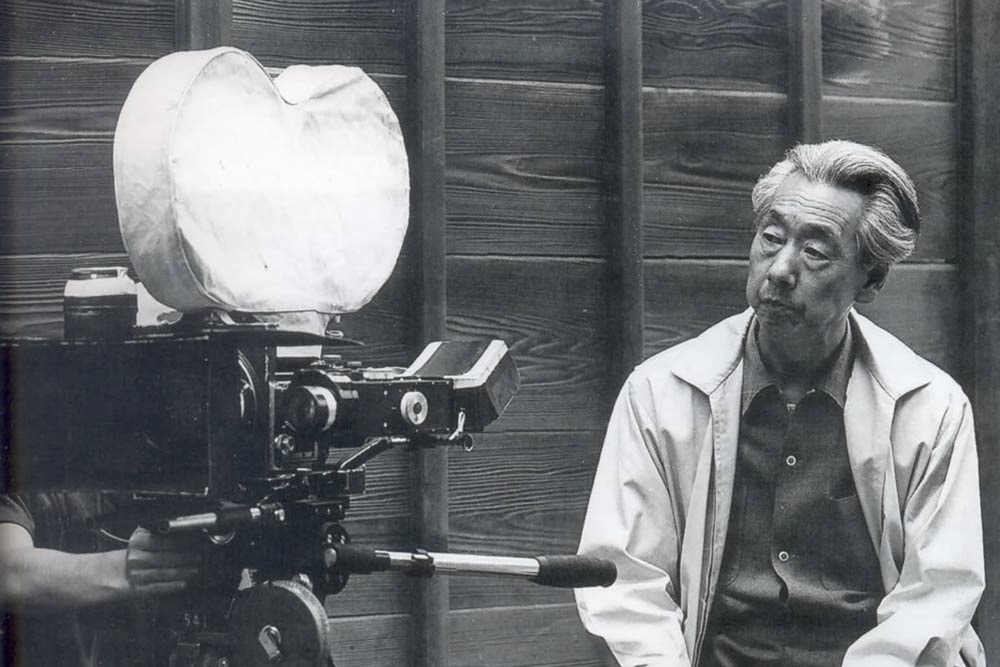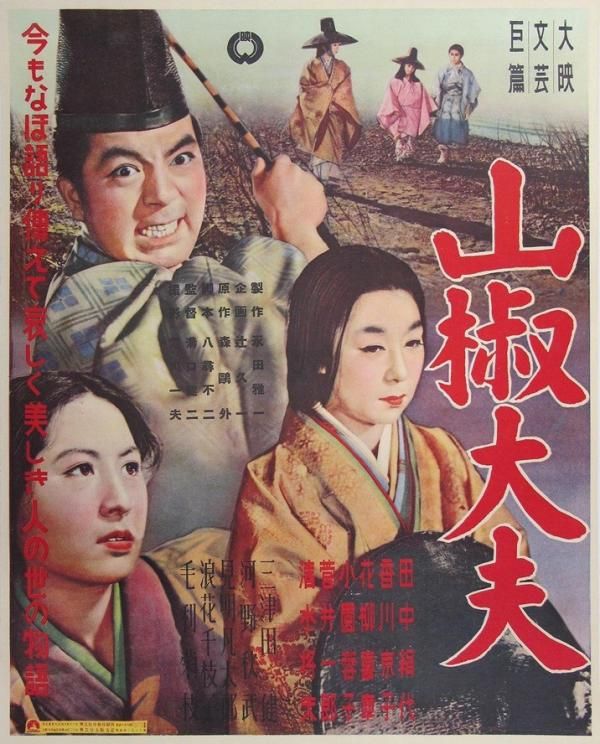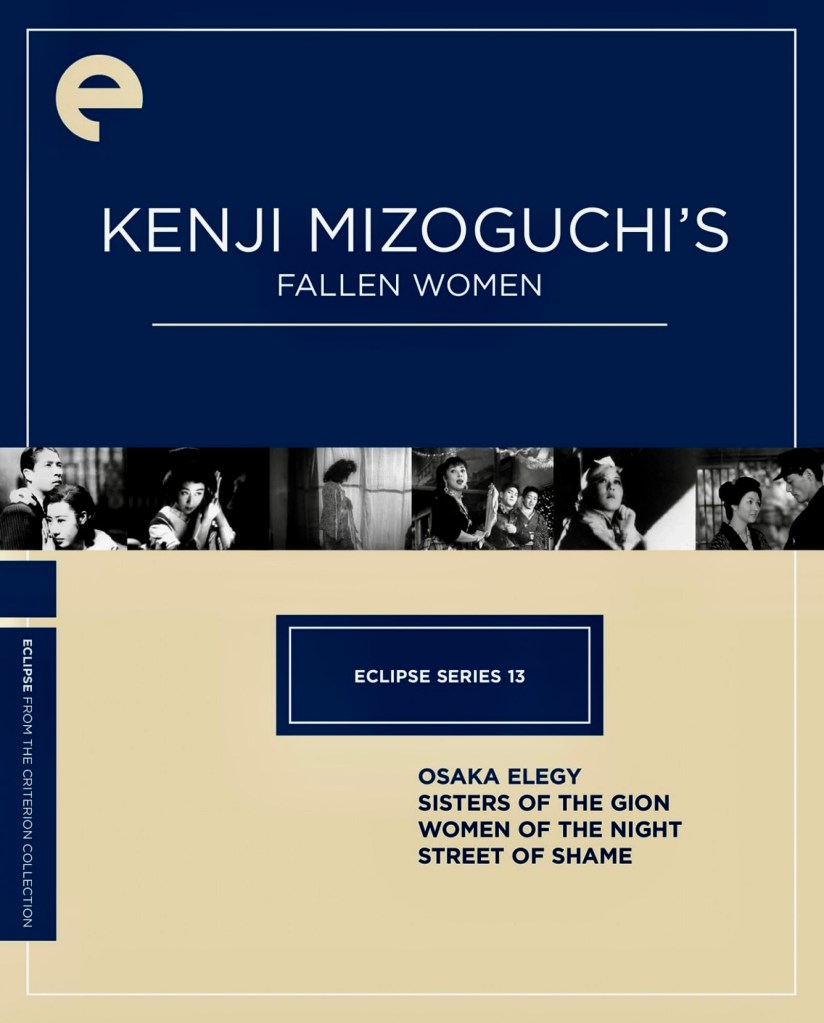
When it comes to equality between the sexes, do you think life has improved for women over the past 100 years? According to a June 2023 poll by CNBC, the best countries for women in terms of equality and work opportunities are (in this order) Iceland, Norway, Finland, New Zealand and Sweden. The UK is further down in the 15th position and the U.S. is surprisingly ranked at the 46th slot out of 146 countries. Of course, the places where women are treated like second class citizens or worse is no surprise. A poll on the Global Citizen website in 2021 shows the ten worst places for gender equality led by Afghanistan and followed by Syria, Yemen, Pakistan, Iraq, the South Sudan and other African countries. And what about Japan? Despite its reputation as a sophisticated culture and a major world power, the country is still a patriarchal society where women continue to serve the men who hold the power. Japanese director Kenji Mizoguchi has often examined and critiqued the kind of society that forces women to give up any independence and make constant sacrifices for their men which is why the director is often considered a proto-feminist in cinema circles. Yet, in Mizoguchi’s long career of almost 100 features and short films, the demeaning patriarchy of Japan has often been a running theme in his work and it created considerable controversy in his country early in his career, emerging most strongly in two of his finest movies, Naniwa Hika (English title: Osaka Elegy, 1936), which was banned by censors in 1940 for displaying “decadent tendencies,” and Gion no Shimai (English title: Sisters of the Gion, 1936), which is even angrier and more despairing than the later.
Even though Sisters of the Gion runs a brisk sixty-nine minutes, the movie presents a rapidly escalating storyline of dramatic events and numerous male characters who pass through the lives of two sisters who are barely managing to survive in a poor neighborhood in Kyoto. Umekichi (Yoko Umemura) is the older, more traditional sister who is the mistress of Furusawa (Benkei Shiganoya), a married businessman who is now bankrupt with nowhere to live (his wife and family, whom he scorns, have returned to their village). Furusawa goes to Umekichi for sympathy and she takes him into her home, grateful to be able to serve him after the years he supported her.
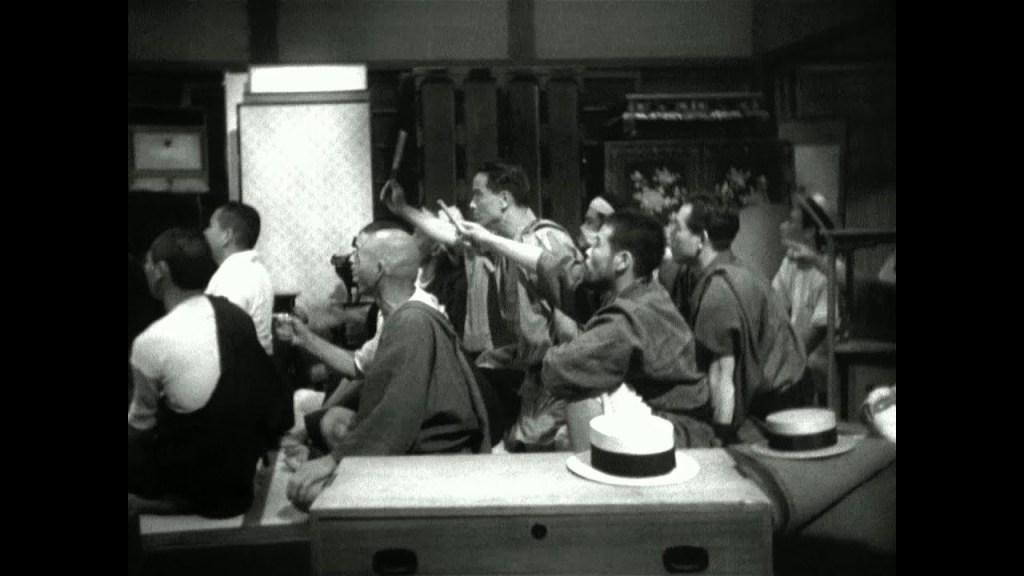
This does not sit well with Omocha (Isuzu Yamada), Umekichi’s younger sister, who is unusually defiant and progressive for a woman in 1930’s Japan, and Mizoguchi’s depiction of her was considered equally radical for the time. Unlike Umekichi, Omocha has graduated to the level of geisha, which requires training and the sponsorship of a geisha madam, while Umekichi is of a lower rank and basically little more than a prostitute even if she is committed to just one man.
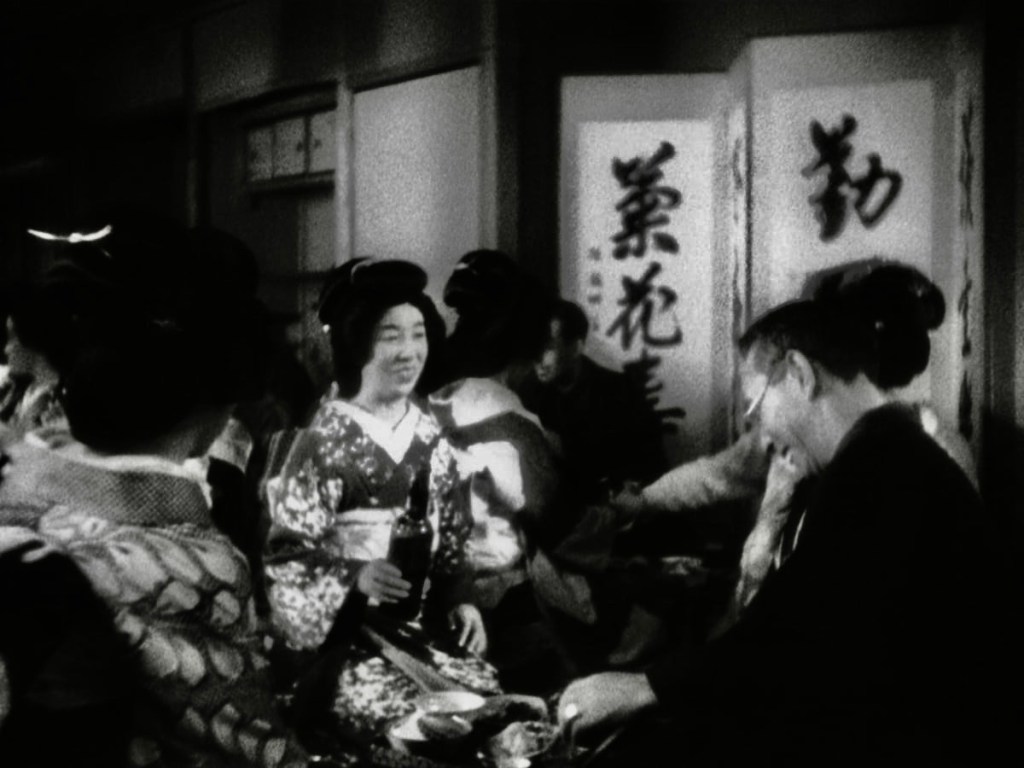
The two sisters couldn’t be further apart in their opinions about the opposite sex and Omocha tries to convert Umekichi to her way to thinking toward Furusawa, stating, “The way you think about men is all wrong…it’s only fitting that he’s done things for you. Men come here and pay money to make playthings out of us…men are our enemies. I despise them. We should make them suffer for it. That’s what I intend to do.”

True to her word, Omocha launches a plan without telling her sister that will end with the good-for-nothing Furusawa being ejected from the house and replaced with Jurakudo (Fumio Okura), a business rival of Furusawa, who is moderately successful and easily convinced by Omocha that Umekichi secretly desires him as a benefactor. At the same time, Omocha encourages the attention of Kimura (Taizo Fukami), an earnest and naïve fabric salesman who dotes on her and is coaxed into gifting her with an expensive kimono for free so that she sister can be accepted as a geisha by a local madam.
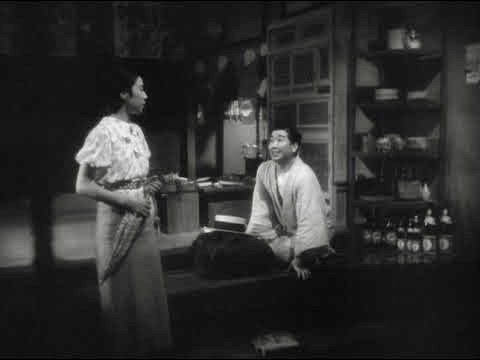
[Spoilers ahead] Omocha’s web of deceit begins to create complications not just for herself but everyone around her. Kimura’s free gift of a kimono to Omocha is discovered by Kudo (Eitario Shindo), his stern boss, who admonishes his employee, forbids him to see Omocha again and then goes to confront the scheming geisha himself. As expected, Omocha works her charms on Kudo, telling him Kimura seduced her with the kimono as a reward, and soon Kudo is her new paramour.
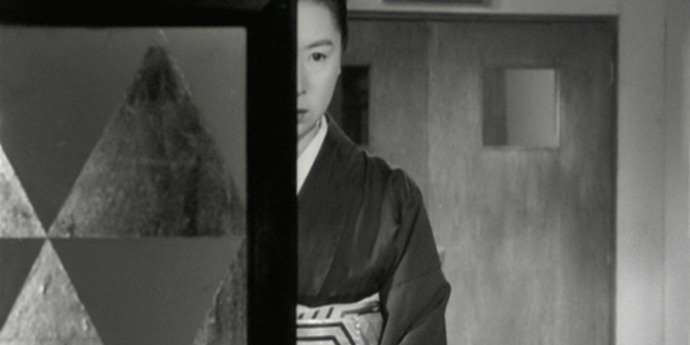
Everything starts to fall apart when Umekichi learns that Furusawa never left town and is living with a former employee. She rushes to him, learns the truth about her sister’s manipulation of the situation and is invited to move in with the man she still longs to serve. The happiness is short lived and Sisters of the Gion ends with Omocha being injured but not crippled by the vengeful Kimura with Umekichi nursing her back to health. Still, they are worse off than before. Furusawa abandons Umekichi without a word, returning to his home town for a factory job, and neither sister has any present prospects for a new client.

The climax may be grim and depressing but it is still not completely without hope. Even in her wounded condition, Omocha refuses to admit defeat, stating, “Something like this won’t make me give into men. Any man who does this to a geisha simply because she refuses him is a coward.” Indeed, the men depicted in Sisters of the Gion behave like spoiled overgrown children or hypocritical moral authorities but Mizoguchi makes it clear that they are just as much victims of Japan’s patriarchal society as the women – the caste system, money and power determine everyone’s fate and no matter what you do, you can’t escape the circumstances of your social status.

Still, it is the women who are trapped in their subservient roles and Omocha feels she has no recourse but to use subversive tactics to survive in post-WWI Japan. Granted, her behavior is often deplorable but she still remains an empathetic figure to some degree. At the finale, when Omocha still shows her fighting spirit, she also acknowledges she is railing against a hopeless situation. Her final words are, “Why do we have to suffer like this? Why do there even have to be such things as geisha? Why does the world need such a profession?” Those sentiments haunt the entire film and will probably haunt anyone who sees this movie.
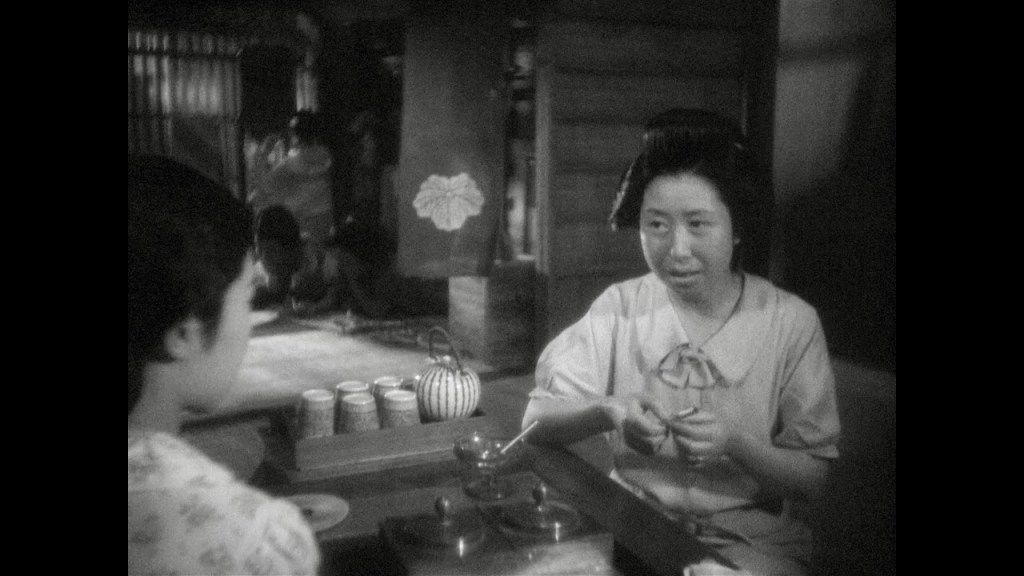
As mentioned earlier, Sisters of the Gion was a highly divisive film when first released in Japan but it has since been recognized by film scholars and cinephiles around the world as a masterpiece. Richard Brody of The New Yorker astutely summed up its importance in a review which stated, “…Filming through doorways as if they were proscenium arches, Mizoguchi constructs exemplary tableaux that, for all their furious Brechtian clarity, miraculously sacrifice no emotion in putting across their social critique. His angry denunciation of the roles reserved for women in the traditional culture of modern Japan blends with his tender, clear-eyed view of the characters, whether predators or victims: here, as in the films of Jean Renoir, everyone has their reasons, but, for Mizoguchi, the suffering leaves little room for irony or comedy.”
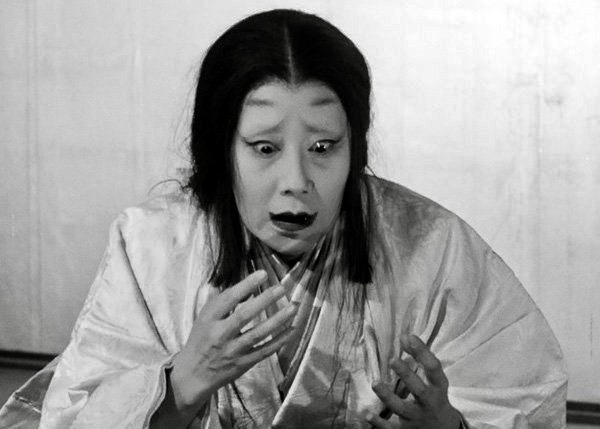
Isuzu Yamada, in the role of Omocha, eventually emerged as one of the most popular and famous actresses of her generation. She was remarkably versatile, gifted at both musicals (The Song Lantern) (1943) and high-spirited comedies The Actress (1947) – both of those films directed by Mikio Naruse. But Yamada is probably best known for her dramatic work such as her white-faced scheming wife in Akira Kurosawa’s version of MacBeth (Throne of Blood, 1957), Yasujiro Ozu’s Toyko Twilight (1957), the crime noir Black River (1957) and as the wicked wife of a clan leader out to dupe an outsider (Toshiro Mifune) in Kurosawa’s Yojimbo (1961). She died in 2012 at age 95. As for Mizoguchi, he worked right up till his death in 1956 at age 58 with Akasen Chitai (English title: Street of Shame, 1956), as his final feature. Not one of his feature films were ever Oscar nominated for Best Foreign Language Film, which is still hard to believe.
Sisters of the Gion remains a moving, impassioned and surprisingly timely film even 88 years later and is an excellent introduction to Mizoguchi’s early work. He would go on to make numerous other movies, several of which are now considered timeless masterpieces of mid-20th century Japanese cinema. Among his most celebrated works are The Life of Oharu (1952), Ugetsu (1953), A Geisha (1953) and Sansho the Bailiff (1954). Both Sansho the Bailiff and Ugetsu were included in the 2022 Sight and Sound poll of the greatest films of all time with Sansho securing the 75th position and Ugetsu ranked at number 90 out of 100 films.
Your best option for viewing Sisters of the Gion is the October 2008 DVD release of the film from The Criterion Collection as part of its sidebar Eclipse series. It is included in the themed box set Kenji Mizoguchi’s Fallen Women and includes Osaka Elegy, Women of the Night and Street of Shame – four excellent films, highly recommended.
Other links of interest:
https://www.globalcitizen.org/en/content/best-worst-countries-for-women-gender-equality/
https://www.toki.tokyo/blogt/2016/8/2/the-history-of-geisha-in-japanese-culture
https://www.theguardian.com/film/2012/jul/11/isuzu-yamada

